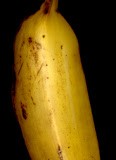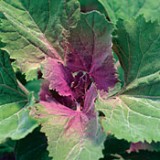
We begin this post with a disclaimer. The very last thing you should do is act on edible mushroom foraging advice from this particular blogger. That said, we enjoyed two delicious meals of chicken of the woods mushrooms this week thanks to friend of the blog Lee. And, yes, it really does have both the taste and texture of chicken.
Back in 2019 Lee alerted us to a secret stash growing on one of LA’s many carob trees. Our 2021 harvest was on another carob tree, this time on Lee’s compound.
In the two years since that first harvest I’ve learned a few things about the edibility of this mushroom. You need to cook the mushroom thoroughly or nausea and vomiting can result. It’s also good to harvest on the young side as the older specimens are tough and can cause stomach upset. You also need to avoid specimens growing on conifers or eucalyptus trees. I’d advise eating a small amount first and seeing how you do. We consumed copious quantities of it with no ill effect.
Recent research has shown that what was once thought of as one species of chicken of the woods in North America is, in fact, a complex of species. Here in the west we have Laetiporus gilbertsonii.
Here’s some good photos showing Laetiporus gilbertsonii at various stages.
Note that should this mushroom show up on one of your trees you’ll want to hire an arborist as this fungus can cause serious structural problems. On the plus side you’ll have many gourmet meals.
To review, eat the young growth, cook well and know the species of tree you’re harvesting from and you should be fine. Chicken of the woods is sort of a gateway to edible mushroom foraging as it’s one of the easiest wild mushrooms to identify. The only problem you’ll have is what to do with the many pounds of delicious bounty that will appear, I guarantee you, when you’ve got other stuff to do.





When I was in second grade (in 1960), our teacher brought wild mushrooms that she had gathered and fried them up in our classroom. We all ate some. She must have known what she was doing (in gathering the mushrooms), as nobody got sick. I can’t imagine taking that risk with a roomful of children.
I am glad that there are experts who can identify safe fungi.
I can definitely see the benefits of teaching kids not to be afraid of wild mushrooms. On the other hand it does need to be done carefully. There was an incident in our local school garden a few years ago involving an accidental mushroom poisoning.
I like the idea of foraging for wild edibles, but lack the courage/confidence to do so. It is probably wise, as you did, to find someone local who knows what they’re doing to guide one in the learning stages. Having said that–free “chicken”? I’m in!
It’s really delicious and very easy to identify. It’s all over North America so you definitely have a chance to find some.
I lived in France briefly after college. It was on a farm with sheep and, for some reason, a lone bull. We were surrounded by vast pastures and they were dotted everywhere with mushrooms.
Naturally, I had my American certainty that they were to be left alone. The French, meanwhile, had so such reservations. They’d show up with shopping bags and leave with them crammed full. Undoubtedly, grateful that we were such fools.
I’m here to tell my story 50 years later. Missing out on some delicious mushrooms isn’t exactly a psychic or a physical scar I need to surmount. But I’ve wondered many times over the years why we’re brought up to be so paranoia about it while Europeans can be so cavalier and no worse the wear for it.
I visited a friend in France a decade ago. My friend’s family told me that pharmacists in France provide free mushroom identification for free. I just looked this up and it’s true with some qualifications: https://www.connexionfrance.com/Practical/Health/Can-French-pharmacists-advise-on-edible-poisonous-mushrooms
Strasbourg, where they lived, is adjacent to good wild mushroom foraging so I’m guessing the pharmacists there know what they are doing.
And, yeah, we all (myself included) need to do some work with our mushroom phobias. While there are certainly precautions to take there are a handful of easy to identify and very delicious wild mushrooms to be had even in a dry climate such as ours here in Los Angeles.
The most friendly book for identification is “All the Rain Promises and More,” which is not only water-resistant, but full of color photos.
The author really encourages folks to start with “fool-proof” mushrooms – ones that are distinctive and don’t have any dangerous look-alikes. Those include morels, blewitts and porcini.
But if you’re just starting, don’t let any opportunity to do a spore print pass you by. Since it’s still dry, you can even practice with mushrooms from the grocery store (which will probably be leaking spores in every direction, anyway). Get used to going through the ID key – the practice will serve you well.
If you live in a city with a fungus enthusiasts club, we’re also coming up on the time of year for mushroom fairs, which almost always feature an ID table. If you bring in mushrooms to be identified, make sure they’re fresh and also bring as much information about where you found them (what kind of tree they were near, if they were growing in soil, etc.), which will greatly help the person helping you.
Hey Permie–many thanks for the tips. I’ve found blewits in our backyard. And I’ve just started attending LA Mycological society events again. Right now I’m in a book club where we’re reading The Mushroom at the End of the World–a really great book.